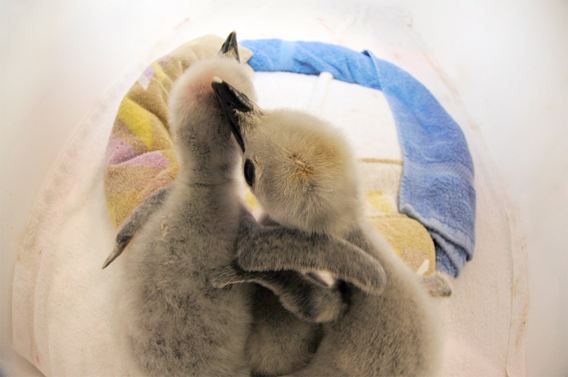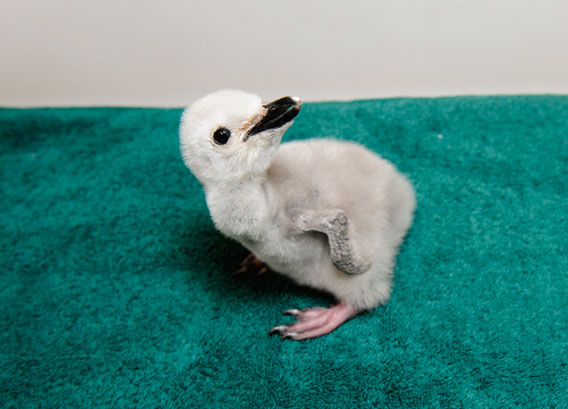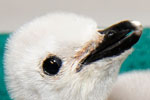
Chinstrap penguin chicks get cozy. Photo by Julie Larsen Maher © WCS.
A picture of a pair of chinstrap penguins (Pygoscelis antarcticus) at the Wildlife Conservation Society’s Central Park Zoo is one of the highlights of a new blog, Real Chicks of Central Park. The blog aims to raise awareness about penguins, which are at risk from climate change and loss of food sources due to unsustainable fishing practices by humans.
Penguins featured on the blog include four gentoo chicks and four chinstrap chicks. Both species species are native to the Antarctic.
The chicks hatched between July 1, 2011 to July 22, 2011. They are now full grown.

A chinstrap penguin chick gets weighed. Photo by Julie Larsen Maher © WCS.

Chinstrap penguin chick. Photo by: Julie Larsen Maher.
Related articles
PHOTO: Adorable penguin chicks score their own blog

(11/15/2011) A new blog, dubbed the Real Chicks of Central Park, is allowing visitors an intimate look at eight impossibly-cute penguin chicks. Including video, photos, and interviews the blog is an attempt to raise awareness about penguins. The highlighted chicks include four gentoo penguins (Pygoscelis papua) and four chinstrap penguins (Pygoscelis antarcticus).
Antarctic penguins losing to climate change through 80% krill decline
(04/11/2011) Climate change has hit species of Antarctic penguins by causing a staggering decline in their prey: krill. A new study in the Proceedings of the National Academy of Sciences (PNAS) has found that both chinstrap penguins (Pygoscelis antarcticus) and Adélie penguins (Pygoscelis adeliae) have seen their populations decline likely do to less krill, instead of habitat changes. Since 1970 krill populations have fallen by 80% in the Southern Ocean surrounding Antarctica. Because krill require sea ice to reproduce, shrinking sea ice from climate change has made it more difficult for them to breed.
The penguin crisis: over 60 percent of the world’s penguins threatened with extinction

(06/10/2010) Everyone loves penguins. With their characteristic black-and-white ‘tuxedo’ markings, upright waddle, and childlike stature, penguins seem at once exotic and familiar: exotic because they live far from most human habitations, familiar because they appear in innumerable books and movies. From Mr. Popper’s Penguins to Happy Feet, and from March of the Penguins to And Tango Makes Three, penguins pop-up everywhere. The flightless birds have even provided the name and symbol to one of the world’s most successful publishing houses. Yet despite their popularity amid the human kingdom, few people seem aware that penguins worldwide are facing an extinction crisis.
2-degree rise in temperature may doom penguins colonies
(10/10/2008) More than half Antarctica’s penguin colonies are at risk by a 2-degree global rise in temperatures, according to a report released by the environmental group WWF.
Global warming puts penguins at risk of extinction
(02/11/2008) Climate change could put the long-term survival of sub-Antarctic King Penguins at risk by reducing the availability of prey, reports a new study published in Proceedings of the National Academy of Sciences.